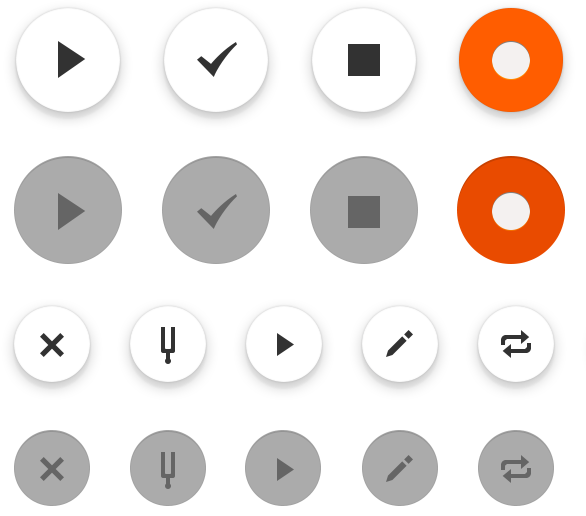Hum began as a shared problem between myself and Joseph. We were tired of losing song ideas to voice memos and voicemails. We met at small design agency in Minneapolis called Sevnthsin. We kept in touch over the years, even while I was in San Francisco working for Adobe. We’d usually just critique whatever we were working on at the time, or talk shit about Jamey Erickson.
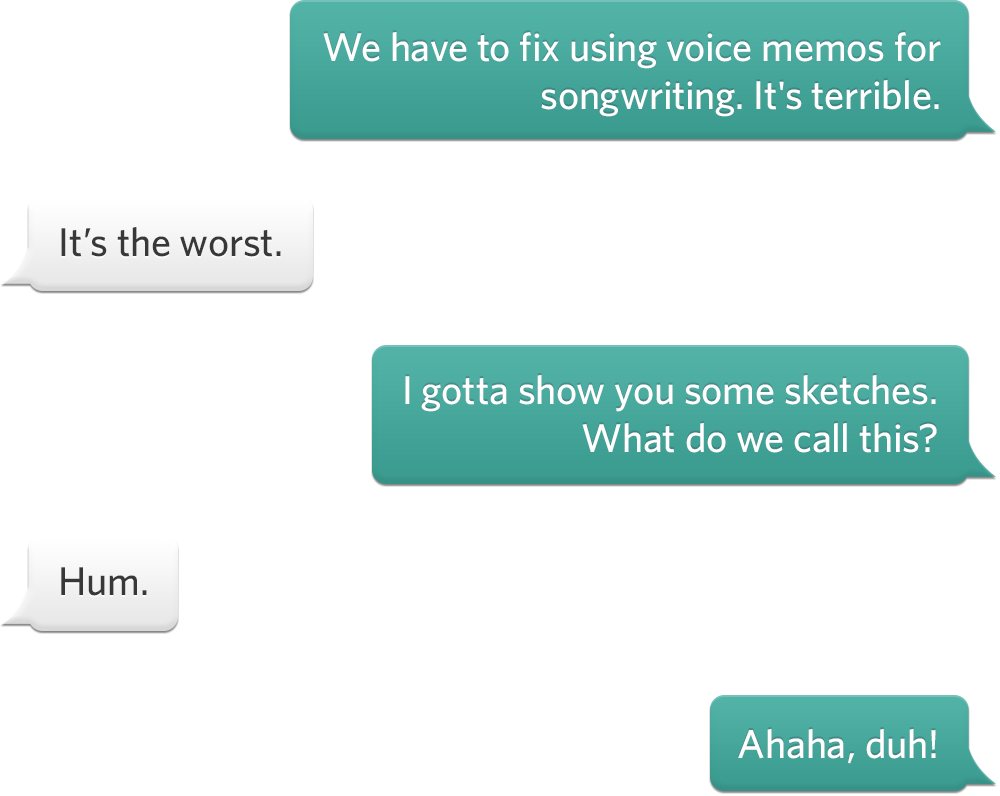
Hum was founded via IM.
We interviewed our songwriter friends about their process and found it was incredibly similar to what we had going on. We’d play a bit on the guitar or piano, whatever our instrument of choice was. We’d stumble across a riff or progression that we’d want to remember or build on. We’d open our iPhone to Voice Memos and record about a minute or two. If it was really solid we’d email it to ourselves or text to bandmates.
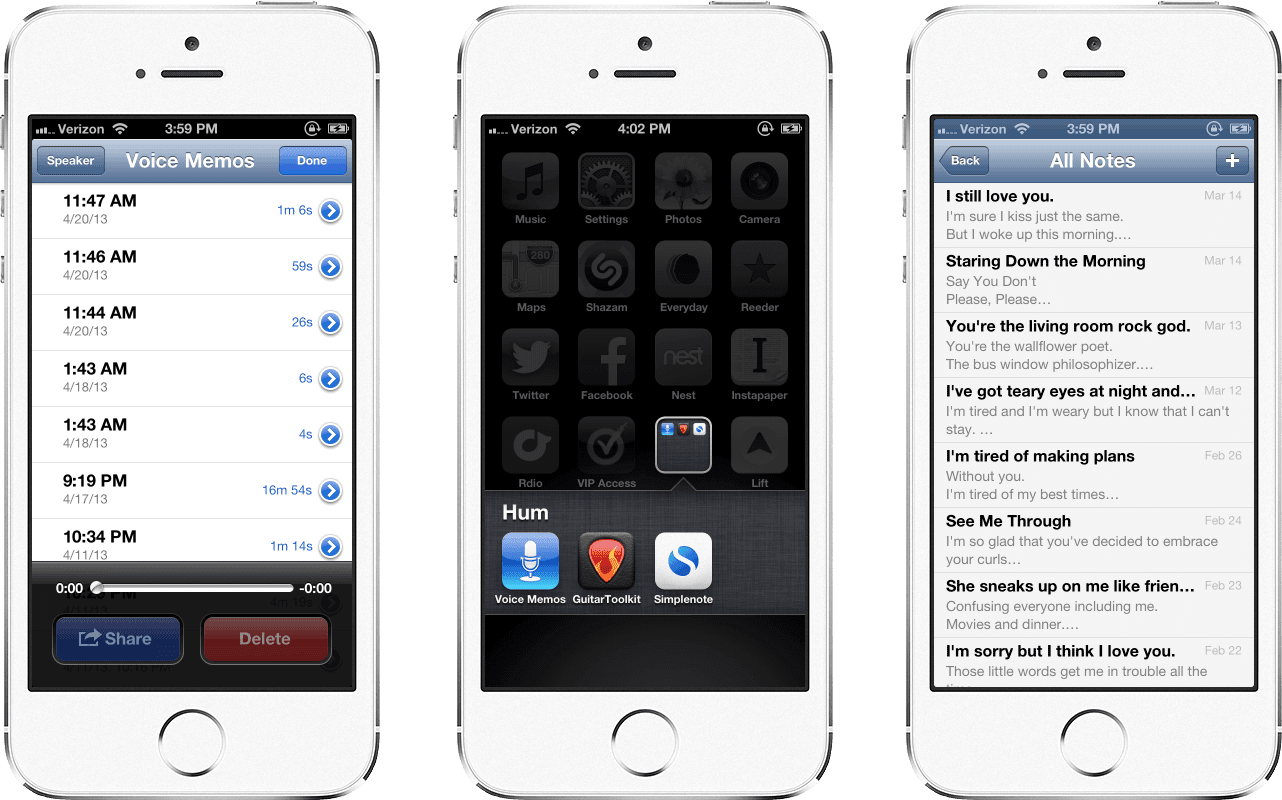
A suite of apps to solve a single problem isn’t ideal.
The problem is once ideas are in a voice memo, they’re often lost. You can’t sort them. They’re hard to revisit. Names are based on the date they were recorded. You have no idea what key they’re in or how your guitar was tuned.
Meanwhile, lyrics are written at the time of inspiration—sitting on a bus, waiting in the airport, watching a show. They’re collected as Notes. They exist between shopping lists and todos. The context for these works are lost. You can’t assign audio memos to the lyrics.
So you press record in Voice Memos, switch over to Notes, sing the lyrics while strumming the guitar. Trim and share. This could be simplified. I got to sketching.

Ship it!

Like the name, the sketches were also obvious.
I moved quickly to Photoshop. Originally, Hum was designed to be built for iOS6. It featured an “almost flat” look featuring buttons with very obvious shadows and structure, almost as if it was a physical device.
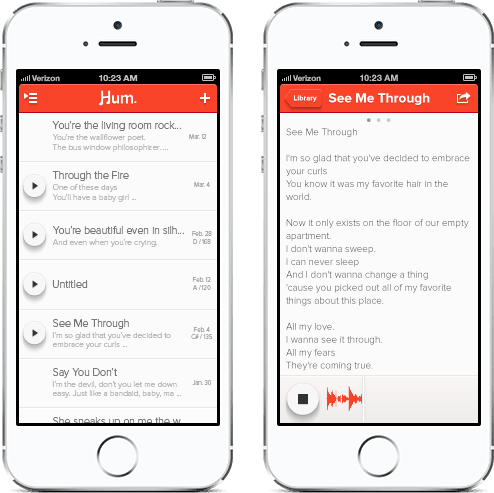
You’ll also notice the main color was red. We thought it went well with the notion of recording.
Shortly after our designs, iOS7 was announced. I wasn’t thrilled. On top of a jarring, new aesthetic, the iOS7 music app looked pretty similar to our red, early versions of Hum.
The teal was originally meant to be a secondary color we could use for branding and illustration purposes. With the switch to iOS7, we rolled with it as our primary color. We flattened some things out, taking cues from the only control in iOS with any shadow whatsoever—UISlider.
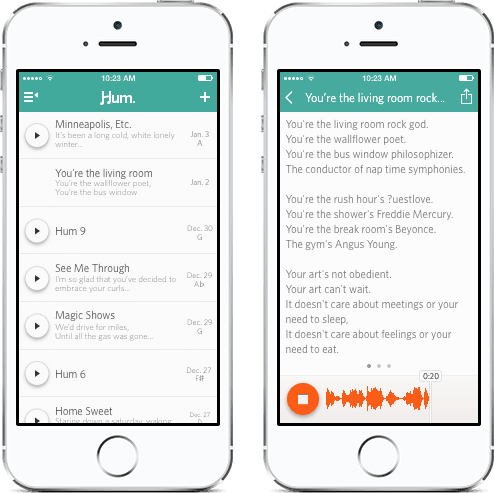
Hum today.
At this point I started hacking on early alpha versions of Hum. I opened up Xcode for one of the first times to build Hum from scratch. It was slow going, but I found things clicked for me when I built everything programmatically. For whatever reason, I just couldn’t ever wrap my head around Interface Builder. I had no working conceptual model for how things were built. I needed the control that building things programmatically offered. Hum would feature many custom transitions. I needed control over them all.
I signed up for a developer account at Apple. I downloaded all the code samples I could get my hands on. I headed to Amazon and got Hillegass’s Big Nerd Ranch Guide to Objective-C Programming. I was going to figure out how to use what could easily be the ugliest language this designer has ever seen.
And it worked out, for the most part, but I still very much needed help on the unsexy, “real” problems–audio recording, database & storage, things like that. I had a static front-end built in a few weeks, complete with transitions (and ugly code). We soon hired Ellen Shapiro to clean everything up and actually add some real functionality to it.
She’s great, and she occasionally takes on freelance stuff. You should hire her. Actually, don’t do that. We’d like all her free time to be spent on Hum.
If you’re a designer who’s afraid of Xcode, have a look at Meng To’s excellent post “Learning XCode 5 As a Designer“. It’s a good, practical starting point for all this nonsense.
After a lengthy beta process in the fall of 2013, Hum was released on January 27th, 2014. It’s been downloaded thousands of times, was featured by Apple as a Best New App, and also carries a 4.5 star rating.
Oh. We need your help to change songwriting forever. We have a strong road map and are actively looking for investors to help us take Hum full time. Get in touch.


